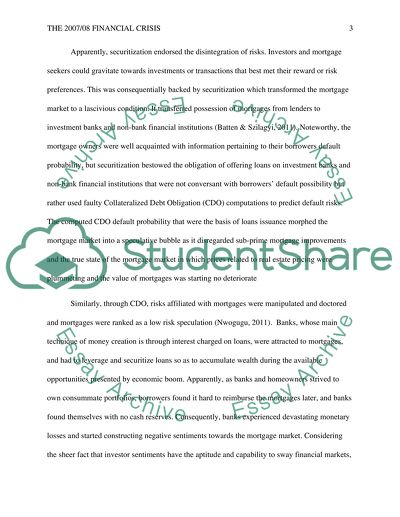Cite this document
(“FINANCIAL CRISIS, HOME MORTGAGES, CREDIT MARKETS, FINANCIAL Case Study - 1”, n.d.)
FINANCIAL CRISIS, HOME MORTGAGES, CREDIT MARKETS, FINANCIAL Case Study - 1. Retrieved from https://studentshare.org/finance-accounting/1681672-financial-crisis-home-mortgages-credit-markets-financial-institutions-moral-hazard-adverse-selections
FINANCIAL CRISIS, HOME MORTGAGES, CREDIT MARKETS, FINANCIAL Case Study - 1. Retrieved from https://studentshare.org/finance-accounting/1681672-financial-crisis-home-mortgages-credit-markets-financial-institutions-moral-hazard-adverse-selections
(FINANCIAL CRISIS, HOME MORTGAGES, CREDIT MARKETS, FINANCIAL Case Study - 1)
FINANCIAL CRISIS, HOME MORTGAGES, CREDIT MARKETS, FINANCIAL Case Study - 1. https://studentshare.org/finance-accounting/1681672-financial-crisis-home-mortgages-credit-markets-financial-institutions-moral-hazard-adverse-selections.
FINANCIAL CRISIS, HOME MORTGAGES, CREDIT MARKETS, FINANCIAL Case Study - 1. https://studentshare.org/finance-accounting/1681672-financial-crisis-home-mortgages-credit-markets-financial-institutions-moral-hazard-adverse-selections.
“FINANCIAL CRISIS, HOME MORTGAGES, CREDIT MARKETS, FINANCIAL Case Study - 1”, n.d. https://studentshare.org/finance-accounting/1681672-financial-crisis-home-mortgages-credit-markets-financial-institutions-moral-hazard-adverse-selections.


